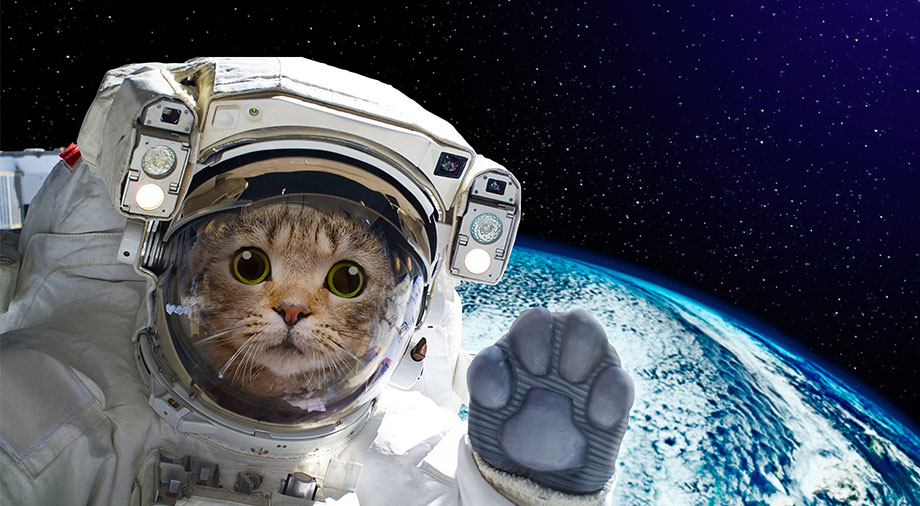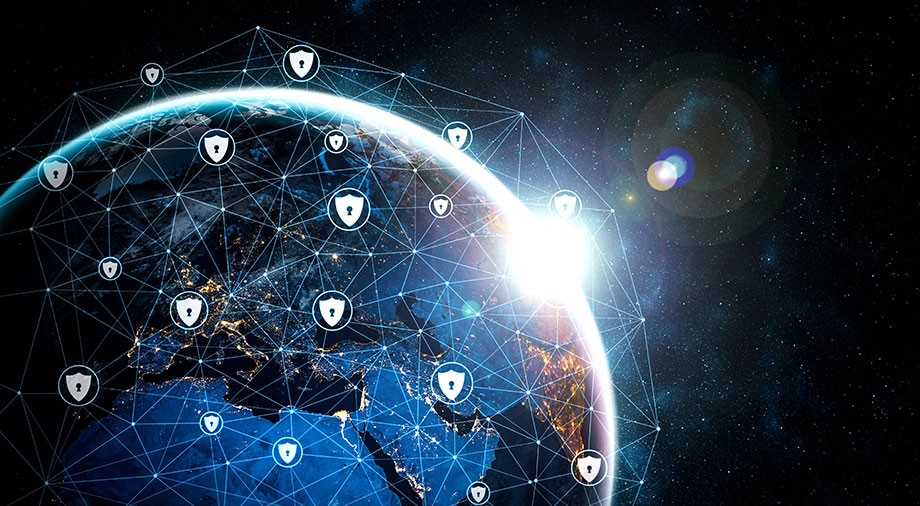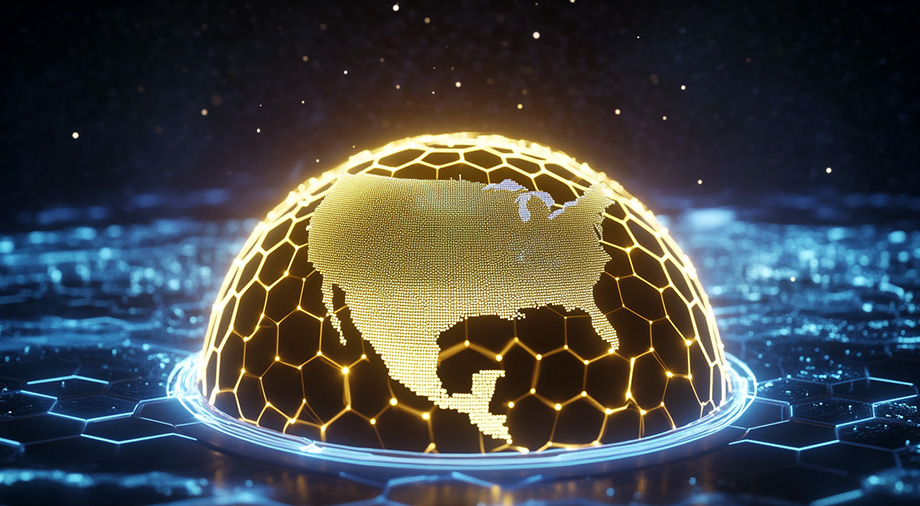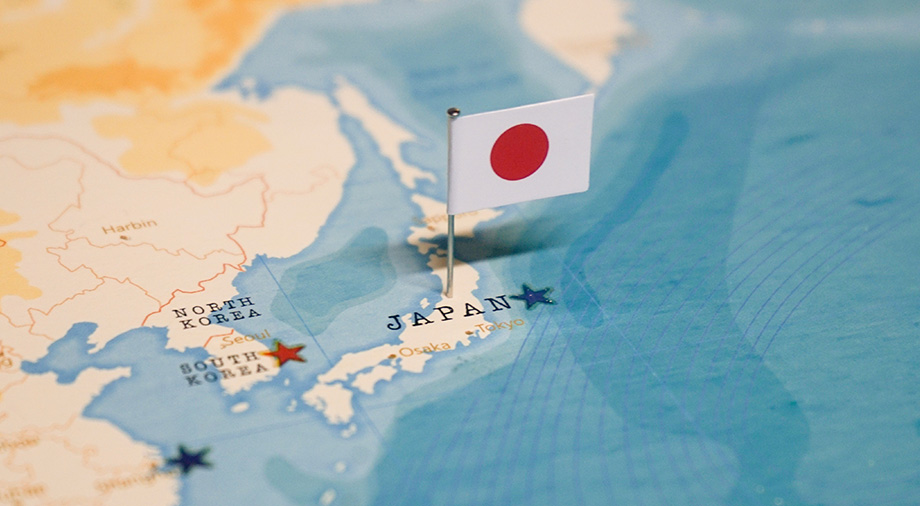April 1st is the perfect occasion to look at serious events through the lens of humor and irony. After all, even a prestigious field like space exploration has had its fair share of funny moments. Pranks in zero gravity, surprises in open space, and sheer absurdity on a cosmic scale. So, to celebrate April Fools’ Day, we’ve collected stories about the top space mishaps that have bedeviled astronauts, engineers, and even entire space agencies throughout the history of spaceflight. Today, we reminisce and smile.
Cosmic sandwich
Safety protocols for behavior in space aren’t just the result of the whims of mission planners and theorists at space agencies. Each rule has a clear rationale behind it, explaining why certain things should absolutely not be done aboard a spacecraft. However, NASA astronauts don’t always follow them… especially when they’re really hungry.
One amusing incident occurred during a Gemini crewed mission, which served as NASA’s stepping stone toward the Moon landing under the Apollo program. The Gemini 3 mission was launched on March 23, 1965, to demonstrate the capabilities of the two-seat Gemini spacecraft, a prototype that would later evolve into the three-seat Apollo spacecraft. The crew of Gemini 3 consisted of two experienced NASA pilots: commander Virgil “Gus” Grissom, and co-pilot John Young.
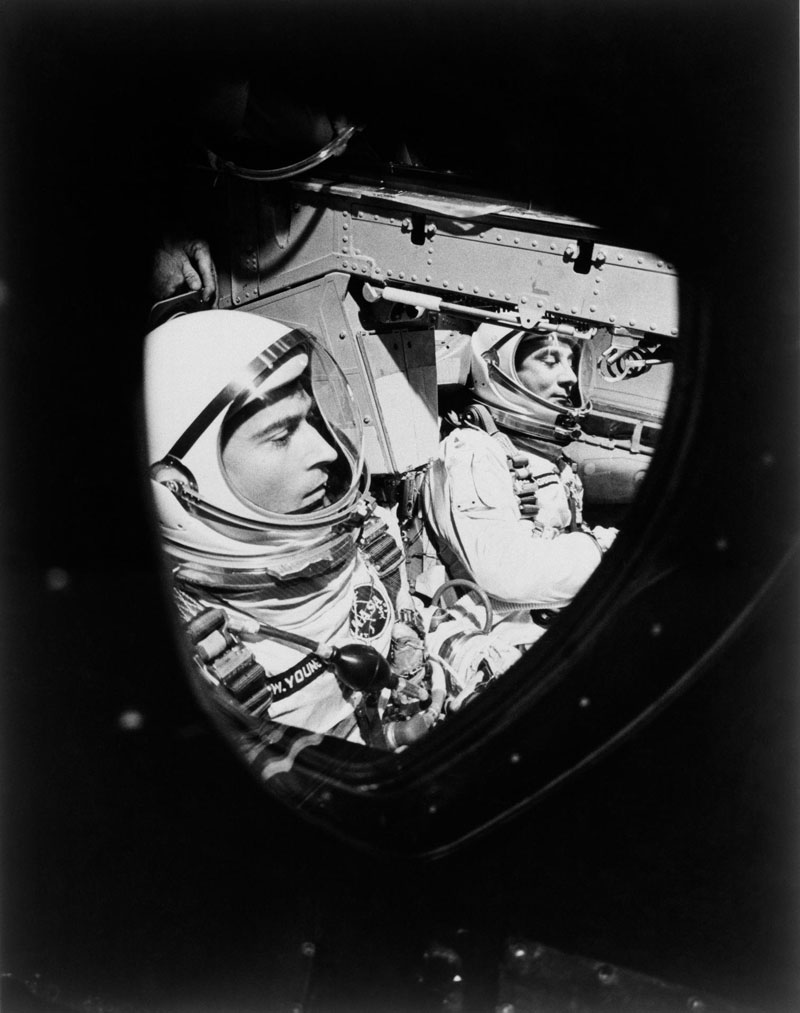
Source: NASA
The rocket carrying the spacecraft launched as planned, and Gemini 3’s separation maneuver was successful, placing the astronauts into their designated orbit. As the second hour of the spaceflight neared its end, a rather unusual conversation took place inside the cramped Gemini 3 capsule, more than 200 km above Earth:
Grissom: “What is it?”
Young: “Corned beef sandwich.”
Grissom (laughing): “Where did that come from?”
Young: “I brought it with me. Let’s see how it tastes. Smells, doesn’t it?”
Grissom: “Yes, it’s breaking up. I’m going to stick it in my pocket.”
Young: “Is it? It was a thought, anyways.”
Grissom: “Yep.”
Young: “Not a very good one.”
Grissom: “Pretty good, though, if it would just hold together.”
Young: “Want some chicken leg?”
It turned out that, before launch, John Young had picked up a corned beef sandwich from a cafeteria and, without much thought, stuffed it into the pocket of his spacesuit without informing any of the mission specialists, including his own commander. Later, Young admitted that he hadn’t planned the incident: the idea of testing how food would behave in zero gravity had come to him spontaneously.
Young’s impromptu sandwich experiment certainly made an impression. In defiance of safety protocols, Grissom took the sandwich and bit into it, only to immediately notice that crumbs from the bread separated and began floating around the Gemini 3 cabin. These tiny crumbs posed a real hazard: they could get into the spacecraft’s electrical systems and potentially cause a short circuit, which would have endangered the astronauts’ lives. Realizing the risk, Grissom quickly stuffed the unfinished sandwich into his pocket.
NASA wasn’t exactly thrilled by the antics of its hungry astronauts. Some flight control specialists were furious at Young’s recklessness, but most were simply relieved that the mission had been a success and the crew had returned safely. In the end, neither Grissom nor Young faced any punishment. However, for the next crewed spaceflight, NASA implemented a strict new regulation: “No undeclared food aboard the spacecraft.”
Moreover, mission control couldn’t understand why Young had even brought the corned beef sandwich in the first place: after all, Gemini 3 astronauts had been provided with a carefully planned meal supply. Their diet consisted of specially packaged freeze-dried food, which could be rehydrated to an edible state simply by adding a small amount of cool water at 26.7°C or higher.
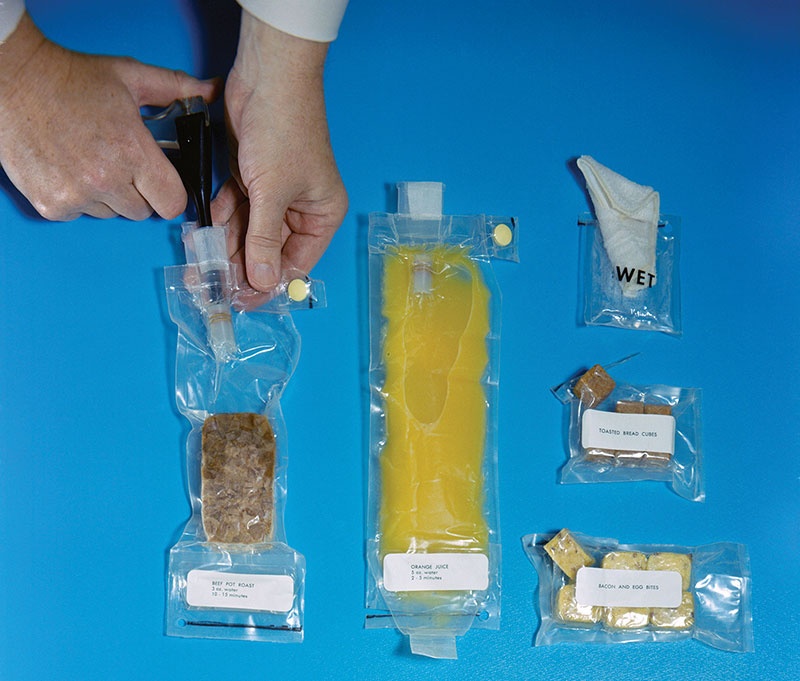
Source: NASA
However, there have been exceptions. In 2001, astronauts on the ISS tasted a specially designed pizza with a firmer crust to prevent crumbs, topped with an extremely thick sauce to keep it from separating and contaminating the station’s module. Additionally, all the ingredients were cold. This food probably felt more like a desperate bachelor’s snack or a makeshift lunch for a homeless person than a proper meal, so astronauts were happy to abandon any further experiments with “forbidden” food for the next 23 years.
It wasn’t until 2024 that pizza made a comeback on the ISS. This time, astronauts had specialized equipment that allowed them to prepare pizza themselves in Earth’s orbit. A frozen crust, delivered by a supply mission, was spread with sauce, topped with cheese and other ingredients of choice, and then placed in an oven to bake. In the end, each crew member of that rotation enjoyed a nearly identical-to-Earth hot pizza. As the astronauts later recalled, this space pizza not only added variety to their diet but also created a remarkable sense of homey comfort during its preparation.
Tales of lunar golfers
Besides sandwiches and pizza, other earthly curiosities occasionally find their way into space. For instance, the commander of the Apollo 14 lunar mission, Alan Shepard, managed to play a game of “cosmic golf” after landing on and exploring the Moon’s surface.
The game happened on February 6, 1971, during the second day of the Antares lander’s stay in the Fra Mauro region. With the mission’s primary scientific objectives completed, the astronauts had some free time. Shepard quickly seized the opportunity: he retrieved a custom-made, modified Wilson Staff Dyna-Power 6 golf club head, which he had secretly stowed in the tool compartment, and attached it to the metal handle of a lunar sample scoop. Then, in a historic first, he took two (somewhat precise, if you can call them that!) swings, officially making lunar golf a reality.
Don’t even ask what NASA thought about this extra baggage. According to one version, Apollo 14 mission director Bob Gilruth was aware of the commander’s plan and reluctantly agreed to it, but only after all the scheduled tasks on the Moon had been completed. Another version suggests that, following in the footsteps of his fellow astronaut John Young, Shepard secretly smuggled the golf club head on board. Either way, the first extraterrestrial golf swing took mission control completely by surprise.
As an avid golfer, Shepard followed all the proper rituals for a good shot, even wearing a special glove used by golfers. Of course, the Moon’s low gravity and the restrictions of the extravehicular activity suit had an impact: Shepard had to swing one-handed instead of using both hands. Both shots were inaccurate, and the balls traveled only a few dozen meters. However, Shepard never admitted this: in an interview after returning to Earth, he claimed that the balls flew “for miles and miles and miles.” It seems that golfers, much like fishermen, have a habit of exaggerating their achievements.
The astronauts saw where Shepard’s first ball landed, but the second one vanished from their field of view, as the visibility through the spacesuit visor was quite limited. It took a full 50 years to determine where the second ball had gone. Astronomy enthusiast and space imagery specialist Andy Saunders analyzed photos of the Apollo 14 landing site and finally found it: 22 meters from the point of impact. The first ball, however, had traveled a bit farther, reaching a distance of 36.5 meters.
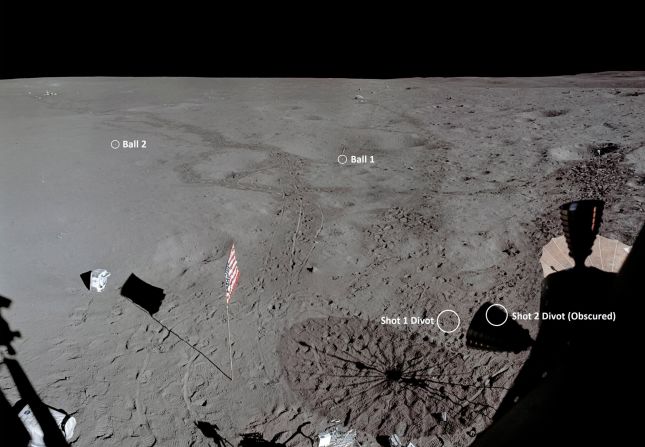
Source: NASA
To find the legendary golf balls in 50-year-old photos, Andy Saunders used a special image enhancement technique called “stacking.” After spending a total of 10,000 hours restoring photographs from all Apollo program missions, Saunders published a book, Apollo Remastered, in which he released over 400 of the highest-quality images captured during the American lunar program. Since then, Shepard’s playful stunt has become a true legend. By the way, in the years since those swings, the value of the golf balls has risen at a rate higher than Bitcoin: today, each one is estimated to be worth at least $10 million.
The universe needs your handbag!
In 2008, an American astronaut of Ukrainian descent, Heidemarie Stefanyshyn-Piper, faced a total fiasco as a space technician. During the STS-126 mission aboard the shuttle Endeavour, Heidemarie and her colleagues were tasked with performing a series of external maintenance operations on the International Space Station.
On November 18, 2008, the astronaut ventured into open space to carry out maintenance on the Solar Alpha Rotary Joint (SARJ), a mechanism responsible for positioning the station’s solar panels to maximize energy absorption.
Like any extravehicular activity, Heidemarie’s task was meticulously planned step by step. First, she was to clean and lubricate the SARJ’s rotating mechanism, then conduct an external inspection of its condition. If any technical issues were found, she was prepared to replace faulty components. Because of this final task, Heidemarie took along a tool bag for extravehicular activity.

Source: NASA
Inside the tool bag were two grease guns for lubricating the SARJ bearings, a scraper for cleaning the mechanism’s surface, a small container, and a trash bag. While applying lubricant, Heidemarie noticed that grease had leaked inside the bag. She attempted to remove it in open space but seemingly underestimated the slipperiness of the lubricant. The tool bag slipped from Stefanyshyn-Piper’s hands and immediately achieved legendary status: it became the largest piece of orbital debris ever left behind by astronauts.
Initially, NASA was deeply concerned about a potential emergency and even launched an operation to track the bag to ensure it posed no threat to either the orbital station or the space shuttle. Later, the space agency confirmed that the tool bag burned up upon reentering Earth’s atmosphere. Fortunately, the loss of the tools didn’t leave Heidemarie without work, as her spacewalking companion, astronaut Shane Kimbrough, had a spare set of tools.
Losing tools occasionally happens during spacewalks, and Stefanyshyn-Piper’s incident was not the last. On November 2, 2023 (which seems to be an ominous month for all tool bags in open space), NASA astronauts Jasmin Moghbeli and Loral O’Hara were conducting routine maintenance on the ISS’s solar panels.
During the task, Moghbeli accidentally let go of her tool bag’s handle, and it met the same fate as Stefanyshyn-Piper’s. Conspiracy theorists might claim that NASA’s female astronauts have secretly conspired to intentionally lose their tool bags to avoid hard work, but in Moghbeli’s case, the tools in the bag were not required for that stage of the maintenance, and the team continued their tasks as planned. Sorry, conspiracy theorists.
“Planet of the Apes” at the edge of space
An actual prank involving a costume change was pulled off on the ISS by American astronaut Scott Kelly during one of his rotations. While unpacking a supply shipment, Kelly discovered a neatly wrapped gorilla suit among the cargo designated for him. The unusual package was sent by his twin brother, retired astronaut Mark Kelly, who later recalled that he had done it “to help ease his brother’s psychological state after nearly a year in orbit.” Well, maybe Scott Kelly did improve his mental state, but the same couldn’t be said for his fellow crew members on the station.
Amazingly, this was actually the second gorilla suit Mark Kelly had attempted to send to his brother on the ISS. The first one was supposed to arrive aboard the SpaceX Dragon spacecraft during the CRS-7 mission in June 2015. However, the Falcon 9 rocket’s second stage began to disintegrate due to a helium tank mounting failure, leading to the loss of the entire cargo, including the gorilla suit.
When the second package finally made it to the ISS, Scott Kelly wasted no time. He chose British astronaut Tim Peake as the target of his prank. In February 2016, Kelly dressed up in the gorilla suit and hid inside a large white storage bag. As Peake began to open it, Kelly suddenly jumped out and started floating after him through the ISS module. Kelly later posted a video of the prank on his personal account on X (then Twitter). Over the years, the video has amassed millions of views.
However, during a 2022 interview, Kelly finally laid all his cards on the table, admitting that what millions of viewers on Earth initially took for a genuine prank was actually a well-directed performance. His crewmate knew what was coming when he opened the white box. As Kelly’s year-long stay on the ISS was coming to an end, he decided to try his hand at another role: that of a filmmaker. In the end, he became the director, screenwriter, cameraman, and lead actor in what might be called “Planet of the Apes at the Edge of Space,” with Tim Peake making a brief cameo appearance.

Source: pappysgoldenage.blogspot.com
However, aside from Peake, the other members of that ISS rotation had no idea that a hairy intruder had appeared on the station. At one point, the “gorilla” even visited the Russian segment of the station, driving the cosmonauts to nervous laughter (luckily, they didn’t start shooting). Another time, Scott sneaked into a fellow astronaut’s sleeping quarters in his costume, climbed into the bed, and jumped out just as the poor guy was preparing to sleep.
After returning to Earth in 2016, Scott Kelly, who was then 51, soon retired. To this day, he fondly remembers his costumed antics on the ISS, emphasizing that his main goal with the monkey business was to draw children’s attention to space, especially since kids love animals “It’s not every day you see a gorilla in orbit, right? I think it looked pretty cool!”
Cosmic aromas
In the vacuum of space, there are no smells, but many astronauts who have spent long periods on the ISS have described distinctive odors inside the orbital station. They often classified it as metallic, gasoline-like, gunpowder-like, or even resembling the stench of burnt steak. Another description characterized the smell as “a mix of a gym, a cafeteria, and a laboratory.” (Let’s be honest….are you starting to lose the desire to journey to the stars?)
But it’s true: space has an unpleasant scent inside a spacecraft or orbital station. This mostly happens because the Sun’s ultraviolet radiation breaks down oxygen molecules, producing ozone, which has a distinct metallic smell. According to astronaut Chris Hadfield, space radiation hitting the ISS affects its metal frame, oxidizing it and ionizing molecules. As a result, a faint trace of metallic chemicals is released into the station’s air, which astronauts perceive as the scent of gunpowder. In a way, it’s very similar to the process of evaporation.
Similar aromas were noticed by Apollo lunar mission astronauts when they returned to Earth with several kilograms of lunar soil samples. The gunpowder-like scent of lunar regolith and dust was especially noticeable in the cramped space of the lander in the first few minutes after astronauts removed their suits. However, the euphoria of a successful interplanetary journey was so overwhelming that the crew immediately dubbed this smell “the aroma of victory.”
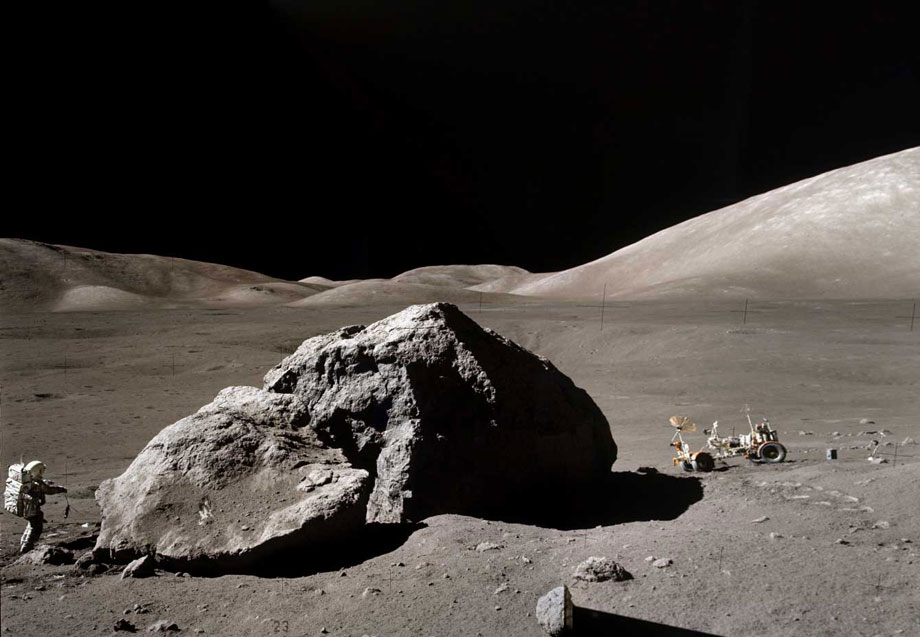
Source: NASA
However, as we’ve known since the days of the Roman Empire, “pecunia non olet,” which translates from Latin as “money doesn’t stink.” So even something as questionable as “space smell” has been monetized. Based on the recollections of astronauts who have personally experienced the odor of space, a perfume called Eau de Space was created. A 100 ml bottle can be purchased on the company’s website for about $66.
However, it turns out that many space enthusiasts aren’t particularly fond of this artificially recreated, Earth-based aroma. Eau de Space currently holds a rating of 2.13 out of 5, with users describing its main notes as metallic, plastic-like, and smoky. Not exactly a fragrance that guarantees success on a first date.
In any case, despite all its seriousness and life-and-death stakes, space exploration is full of amusing mishaps and strange moments. These stories have in turn become part of space folklore, passed down as legendary tales that can be hard to believe but still make us smile.

